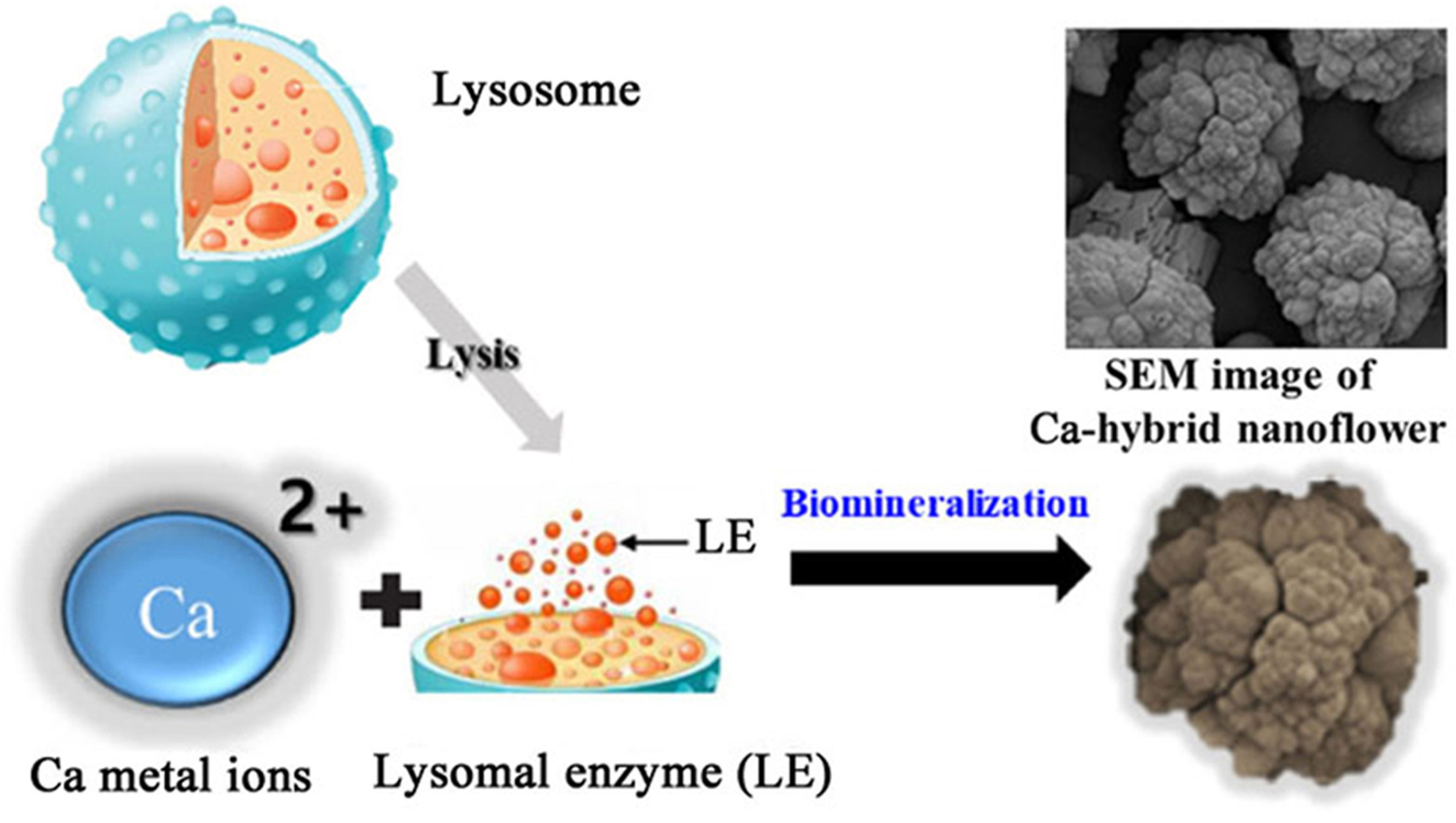• EWLE guided the synthesis of calcium hybrid nanoflowers, acting as effective morphology controllers.
• Romanesco-like CaCO3 nanoflowers were formed by combining EWLE with pH modulation, creating a unique hybrid structure.
• Nanoflowers with 1.0 mg EWLE showed 0.0198 mM-1min-1mg-1 peroxidase activity, highlighting catalytic potential.
• Hybrid nanoflowers retained 78% activity for over 60 days, ensuring stability and long-term catalytic efficiency.
Bioinspired hybrid organic–inorganic nanoflowers can be significantly influenced by the inclusion of enzymes derived from cellular organelles, thus offering unique structural functions and applications. This study has introduced a novel approach using egg-white lysosomal enzymes (EWLEs) for the synthesis of Romanesco-like calcium carbonate (CaCO3) hybrid nanoflowers, marking the first use of cellular organelle enzymes in this context. Our approach leveraged the intrinsic properties of EWLEs, leading to the formation of nanoflowers composed of calcite and vaterite polymorphs via biomimetic mineralization. These hybrid nanoflowers successfully incorporated 1.0 mg of EWLE, exhibited a specific peroxidase activity of approximately 0.0198 mM min−1mg−1 and retained over 78% of their initial activity for more than 60 days, demonstrating exceptional stability. This work challenges traditional methods by emphasizing the dynamic, biomimetic transformation of enzyme-organic hybrid systems, and offers new insights into enzyme-material interactions. This bridges the gap between biomineralization and enzyme applications and opens innovative possibilities for stabilizing enzymes, enhancing catalytic efficiency, and developing advanced biomaterials for biocatalysis.

